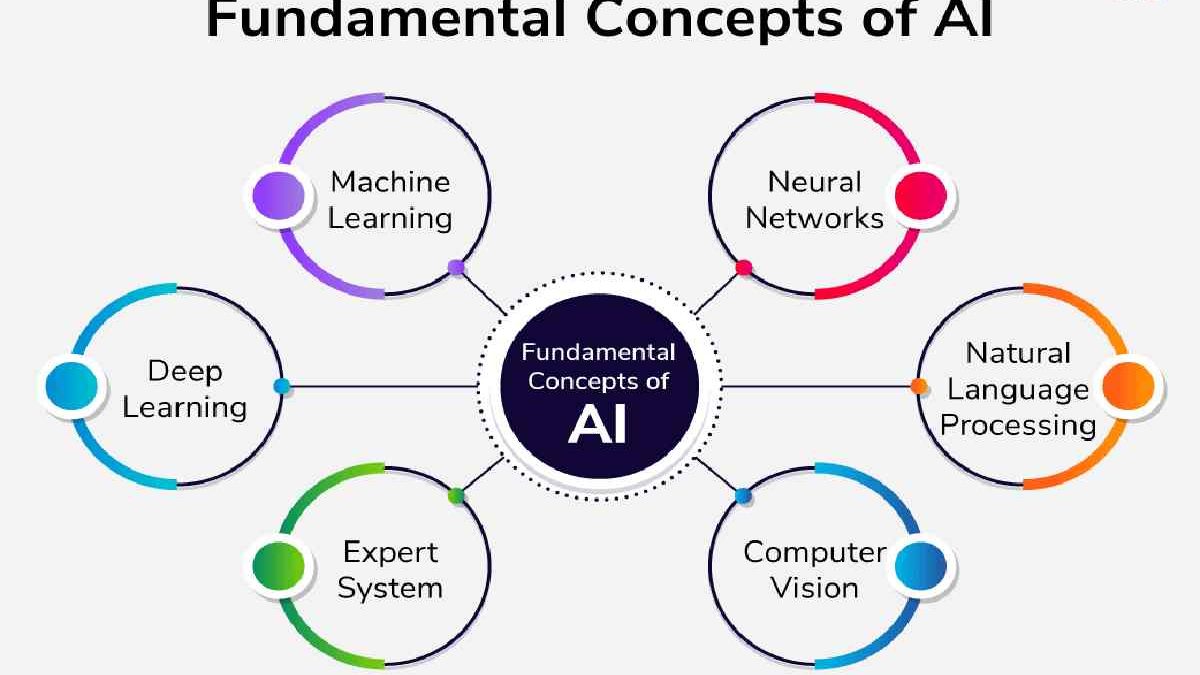Basic AI Concepts From big data to self-driving vehicles, artificial intelligence (AI) has undeniably transformed how many industries operate today. But, despite playing a more significant role in our everyday lives. Not many are still aware of what AI. And machine learning (ML) do. This post aims to break down some of AI’s basic concepts into digestible pieces.
Table of Contents
What is AI, and How Organizes It Work?
AI is a time that refers to a computer or machine’s ability to accomplish tasks or make decisions, just like humans. AI designers aim to reproduce human attributes such as creativity. Logical reasoning, and knowledge acquisition in systems to varying levels. Virtual helpers and chatbots in travel booking sites demonstrate how AI can automate specific tasks that only humans could perform in the past.
What are the Fundamental AI Concepts?
To fully understand how AI works, you need to learn about the following basic concepts first:
1. Machine Learning
Machine learning (ML) is a subset of AI in the simplest terms. Its core lies in the idea that computer systems can learn on their own from data obtained from performing previous tasks and past experiences. That means that you don’t have to pre-program an AI device every time you need it to work on a job.
ML has three subcategories—supervised, unsupervised, and reinforcement.
- Supervised learning occurs when an AI system arrives at a predictable conclusion based on existing data.
- Unsupervised learning takes place when the AI agent produces an unpredictable result. Which it was not pre-trained to do.
- Reinforcement learning (also known as “goal-oriented programming”) deals with training the AI algorithm to recognize rewards and punishments to develop the best solution to a problem.
2. Deep Learning
Deep learning is also known as “difference programming.” this subset of AI refers to a system’s ability to take unstructured data from multiple sources, analyze it, and apply it to solve new problems.
3. Artificial neural network (ANN)
An artificial neural network refers to a system or an algorithm used in deep learning that mimics how the human brain’s neural circuits function. Such as when making sense of things and events.
What are Other Relevant Concepts in AI?
Listed below are more AI-related terms that can deepen your understanding.
- Categorization: Building a successful AI system requires creating a category or benchmark for a specific field. The machine uses these criteria or metrics to diagnose a problem. After further analysis. Its diagnosis could eventually lead to a fitting solution.
- Classification: This is a property of an AI model that points to its ability to “classify” what type of problem it encounters, what causes it. And what solution can best remedy it. For example, in medical diagnostics, an AI-powered tool identifies an illness based on its unique qualities.
- Collaborative filtering: This refers to the capability of an AI system to make decisions or give recommendations on its own based. On what it learned from a user’s past preferences and actions. An example of its results is a recommendation that you receive via ads or media platforms.
- Natural language processing (NLP): This characteristic of advanced neural networks describes their ability to interpret tasks and produce outputs that humans can read. Conversational AI platforms, such as messaging apps and chatbots, use NLP. The term also pertains to a field of computer science that focuses on developing computers that can understand natural language through reading and listening.
- Data mining involves extracting unstructured data from various databases and websites to enrich predictive AI algorithms. AI systems use statistical methods to analyze aggregated data for trends and associations, which, in turn, allow them to generate new information.

